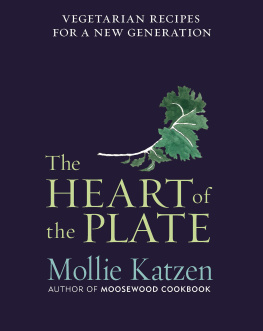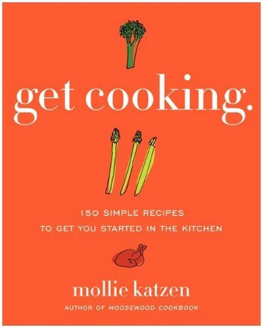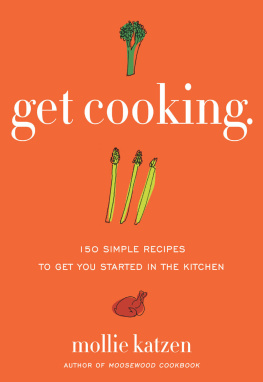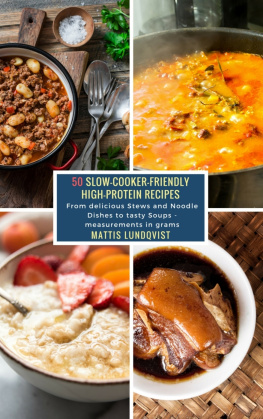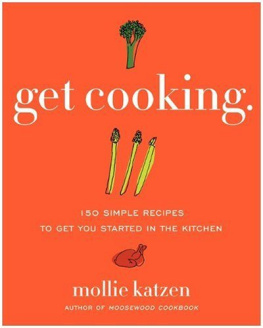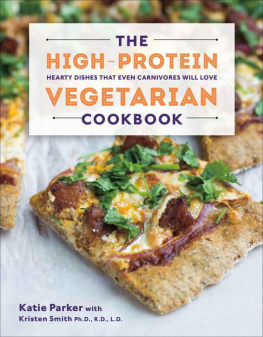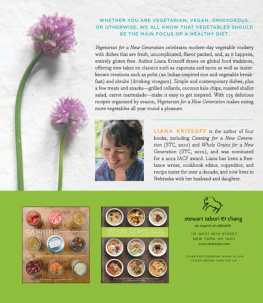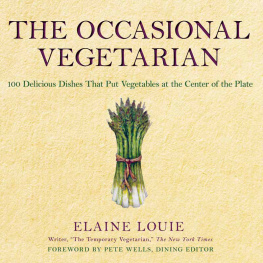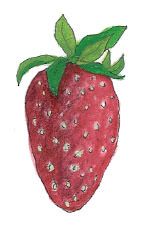Copyright 2013 by Tante Malka, Inc.
Photographs and illustrations 2013 by Tante Malka, Inc.
All rights reserved
For information about permission to reproduce selections from this book, write to Permissions, Houghton Mifflin Harcourt Publishing Company, 215 Park Avenue South, New York, New York 10003.
Katzen, Mollie, date.
The heart of the plate : vegetarian recipes for a new generation / Mollie Katzen ; photographs and illustrations by Mollie Katzen.
Includes index.
1. Vegetarian cooking. 2. International cooking. 3. Cooking (Natural foods) I. Title.
The following recipes have appeared in slightly different form in previous books:
adapted from Get Cooking: 150 Simple Recipes to Get You Started in the Kitchen (William Morrow Cookbooks, 2009), used by permission from HarperCollins.
adapted from Mollie Katzens Sunlight Caf (Hyperion, 2002), used by permission of Hyperion.
adapted from The Vegetable Dishes I Cant Live Without (Hyperion, 2007), used by permission of Hyperion.
adapted from Mollie Katzens Vegetable Heaven: Over 200 Recipes for Uncommon Soups, Tasty Bites, Side Dishes, and Too Many Desserts (Hyperion, 1997), used by permission of Hyperion.
This book is dedicated to Minnie Heller and Betty Katzen, whom I miss every dayand to Sam Black and Eve Shames. You are my heroes.
Introduction
Several decades ago, the recipe journals I had been keeping since my teens morphed into what eventually became the Moosewood Cookbook , reflecting my generations search for creative alternatives to the traditional meat-and-potatoes American dinner plate. The cuisine, if it can be called that, grew out of a fascination with plant-based dishes from various cultures and an enthusiastic appreciation for a sense of kitchen craft reminiscent of our grandmothers.
What made Moosewood noteworthy at the time, I think, in addition to the food itself, was the idea that vegetarian dishes could comprise an entire dinner (or even a lifestyle), relegating meat to occasional status or possibly allowing us to abandon it altogether. In addition to presenting meatless possibilities, the Moosewood Cookbook , with its emphasis on cooking from scratch, was considered doubly novel in an era when quick and convenient were the rage, and vegetables were largely sourced from freezers and cans.
Since the 1970s, Ive both expanded my repertoire and simplified my approach. My early recipes were packed with rich ingredients like butter, cheese, sour cream, eggsin large part to appease those who might be worried that the lack of meat would leave everyone hungry. My confidence for lightening things up, acquired over a period of many years, was born out of a trust that people did not need bulk or richness to feel satisfied. Over time, my assurance also came from a better understanding of how to make food taste wonderful through seasoning, selective and various uses of heat, timing, attention to detail, and a stronger sense of aesthetic economy. A bonus of this approach is that, quite without conscious design, almost half of the dishes in this book are vegan.
A bonus of this approach is that, quite without conscious design, almost half of the dishes in this book are vegan.
Now when I cook, I want as much space on the plate as possible for my beloved garden vegetables. For the most part, that is my definition of my cuisine: a beautiful plate of food, simply cooked, maximally flavored, and embracing as many plant components as will harmoniously fit. My food is sharper, livelier, spicier, lighter, and more relaxed than it used to be.
These days, a favorite dinner feature at my house is a variety of vegetarian burgers: black bean burgers seasoned generously with cumin, for example, or patties made of sweet potatoes, chickpeas, quinoa, and spice, possibly topped with a dab of red pepper pesto or a spoonful of colorful slaw. Though you could never detect it, the burgers might well have come from the freezer, since most of them can be made in advance. Supper chez me might also be a pancake made from wild rice, mushrooms, and goat cheese, or it could just as easily be a celestial zucchini-ricotta cake.
A meal is equally likely to arrive at my table via the oven. In place of a heavy, cheesy casserole that my younger self might have prepared, Im more likely to serve a puffy, crusty, and custardy popover full of mushrooms, or little quiche muffins filled with cauliflower, chopped tomatoes, and touches of feta cheese, or a hot, crisp pizza covered with abundant (and adjustable) vegetables. Vegetables are also the main event in an asparagus tart that takes about 15 minutes, thanks to a cheat ingredient: store-bought puff pastry.
Reversing the ratio of vegetables (and sometimes fruit) to carbohydrates (aka starch) is one of my favorite techniques for delivering more garden items to the plate in delicious ways. This great food flip will have you gracing a modest serving of soba noodles with butternut squash; surrounding a simple risotto with a fig-, balsamic-, and lemon-laced stir-fry of leeks, escarole, and radicchio; and amping up a batch of black rice with beluga lentils and sauted minced mushrooms that blend in visually while providing layers of contrasting taste. Finely chopped broccoli merges with millet in one recipe and dives headfirst into mashed potatoes in another; the former becomes a little pilaf that can be stuffed into a grilled portobello, and the latter transforms into main-course patties encrusted with walnuts and sauted until golden. The next meal might be basmati rice cloaked in a savory blueberry sauce and spooned into a boat of roasted acorn squash.
Lasagna, of course, is generally pillowed with cheese, and the usual ways to veg it up tend to marinara-ize the sauce with zucchini or mushrooms or tuck spinach between the layers. My new approach, seasonal lasagna stacks, omits the tomato sauce and allows generous combinations of vegetables to house minimal noodles, with very light touches of cheese as a subtle presence. Vegan versions of these same lasagnas present the same ingredients in broth, with crumbled tofu replacing the cheese. The results are enthusiastically received every time.
For the most part, that is my definition of my cuisine: a beautiful plate of food, simply cooked, maximally flavored, and embracing as many plant components as will harmoniously fit.
The plant-food road to deliciousness allows you to be an artist as well as a cook, showcasing the beauty of the ingredients as you mix things up in creative yet taste-logical ways. Prepare for your kitchen spirit to be freed up as you embrace color contrasts in bean and rice combinations, pairing orange rice with black beans, yellow rice with red beans, and red rice with fresh green beansall simple, all in this book. The bright gold of a sweet potatopear soup begs to be punched up with a dab of a thick cranberry-orange vinaigrette, and a puddle of mango exults in deep magenta roasted beets and a crown of baby arugula. Bright green mashed peas can be topped with a tangle of fresh mint strips and served with Crayola-yellow crispy polenta triangles for dipping. The peas are part of an entire chapter devoted to the ultimate savory comfort food: mashed vegetables (why stop at mashed potatoes?), also featuring curried mashed carrots with cashews.

